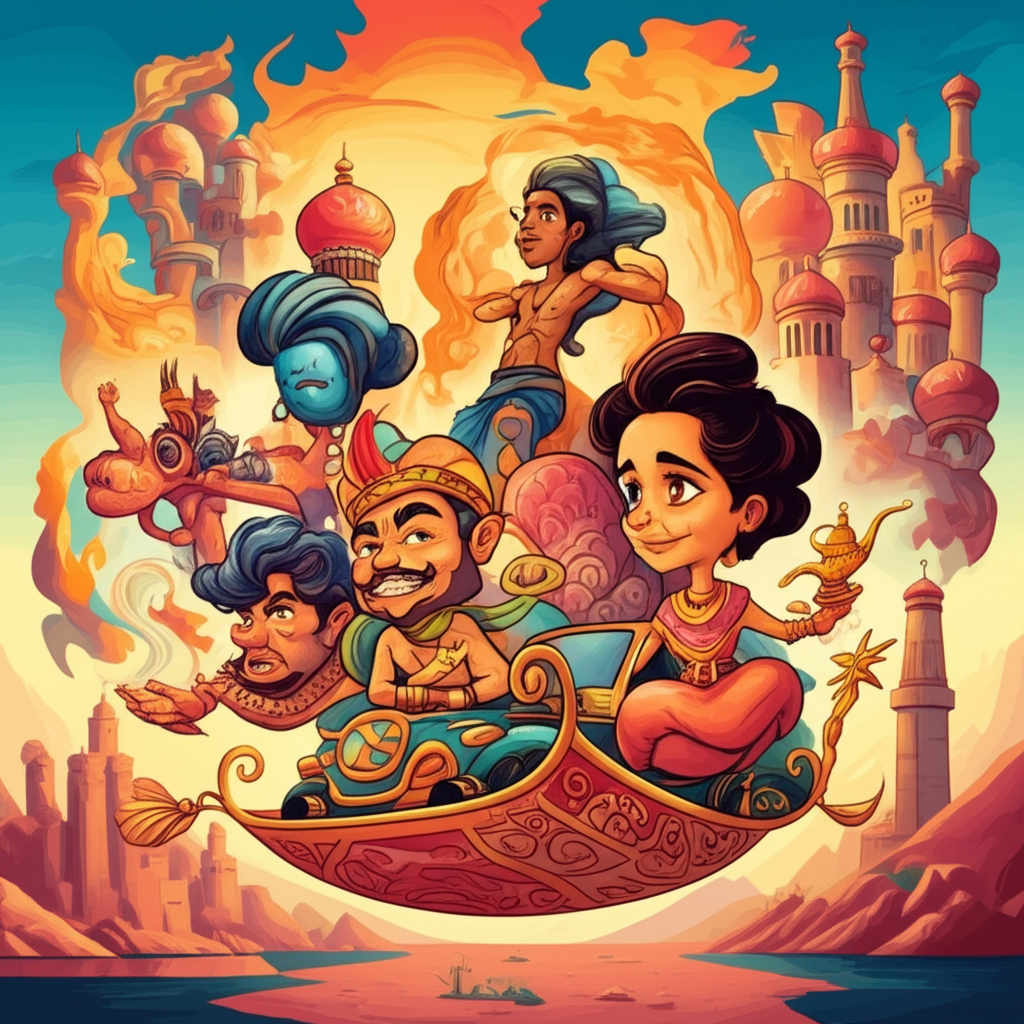
In the tapestry of ancient Arabian folklore, woven from the sands of the desert and the whispers of the wind, lies the legend of the City of Brass. This is not a tale of historical fact, but a traditional story, a product of the rich oral tradition that has preserved the imagination and worldview of people long past. Within this captivating narrative, a thread of prophecy, often associated with the legendary city of Petra, adds a layer of mystique and intrigue.
The genesis of such tales can be traced back to a time when the Arabian Peninsula was a crossroads of trade and culture, a land of stark beauty and challenging extremes. The societies that fostered these myths were often nomadic or semi-nomadic, their lives intrinsically linked to the rhythms of the desert. They viewed the world as a place teeming with unseen forces, where the vastness of the heavens and the mysteries of the earth held sway. Natural phenomena – the sudden storms, the shifting dunes, the shimmering mirages – were often imbued with spiritual significance. Their stories served as a way to explain the inexplicable, to impart wisdom, and to entertain, passing down cultural values and a shared understanding of their place in the cosmos. The City of Brass, and its associated prophecies, emerged from this fertile ground of belief and storytelling.
At the heart of this legend lies the City of Brass itself, often depicted as a magnificent, otherworldly metropolis, forged from the very essence of molten metal. It is not a place inhabited by ordinary mortals, but a realm whispered to be guarded by powerful beings, often jinni or other supernatural entities. The symbolic attributes ascribed to this city are manifold. The brass, a metal known for its strength and luster, might represent immense power, ancient wealth, or an enduring legacy. Its hidden nature, often buried or lost to time, suggests secrets, forgotten knowledge, or a test of worthiness for those who seek it. The guardians, in their terrifying and awe-inspiring forms, embody the primal forces of nature and the inherent dangers of venturing into the unknown. These are not deities to be worshipped, but figures that represent the awe and trepidation that the ancient peoples felt towards the powerful and untamed aspects of existence.
The narrative of the City of Brass, and the prophecy entwined with Petra, often begins with tales of intrepid adventurers or righteous individuals who, through divine guidance or sheer perseverance, stumble upon its fabled existence. Imagine, if you will, a grizzled merchant, his face etched by the desert sun, recounting a story passed down from his grandfather. He speaks of a time when the world was younger, and the desert held secrets that modern man had long forgotten. He tells of a king, perhaps named Sulayman (a figure who, in Islamic tradition, is a prophet with dominion over jinni, adding a layer of recognized religious context to the narrative), who was guided by a divine message to a hidden valley. There, amidst towering, rose-red cliffs that seemed to breathe with an ancient life, lay the entrance to a city unlike any other.
This city, he would say, was not built of stone, but of gleaming brass, its spires reaching towards a sky perpetually lit by an unseen celestial fire. Its gates were guarded by fearsome creatures, their eyes burning like embers, their roars echoing through the desolate landscape. Yet, the prophecy spoke of a time when the city’s treasures, and perhaps its wisdom, would be revealed not by force, but by a descendant of the righteous, someone who understood the true meaning of humility and justice. The prophecy, often linked to Petra, spoke of a specific marker, a sign within the carved facades of the rose-red city, that would reveal the path. This sign, in some retellings, might be a particular constellation aligning with a hidden tomb, or an inscription that only a pure heart could decipher.
The journey to the City of Brass, and the quest to understand its prophecy, was not merely a physical endeavor, but a spiritual and intellectual one. It represented the human yearning for knowledge, for hidden truths, and for a connection to something greater than oneself. The guardians of the city were not simply monsters to be slain, but tests of character, requiring courage, wisdom, and moral fortitude. The prophecy itself served as a beacon, a promise of revelation for those deemed worthy, suggesting that great rewards lay not in material wealth alone, but in understanding the ancient workings of the world and the divine plan.
The symbolism embedded within this legend is rich and multifaceted. The City of Brass can be seen as a metaphor for the ultimate divine knowledge or the perfection of creation, a hidden paradise or a repository of ancient wisdom that is difficult to access. The prophecy of Petra, with its association with a carved city in a dramatic landscape, likely reflected the awe and mystery that ancient peoples felt for monumental architecture and the enduring legacy of past civilizations. The rose-red city itself, carved from rock, speaks to the power of human ingenuity and perseverance, while its hidden nature suggests the secrets that lie buried within history. The jinni, often depicted as powerful but not inherently evil beings, represent the forces of nature and the spiritual realm, which can be both awe-inspiring and dangerous, demanding respect and understanding rather than blind fear. Ultimately, the story speaks to themes of destiny, the pursuit of truth, and the importance of inner worthiness over brute force.
In the modern era, the City of Brass and the legend of Petra have found new life in the realms of fantasy literature, film, and video games. Authors and creators draw inspiration from these ancient myths to craft fantastical worlds, imagining the City of Brass as a tangible location filled with magical artifacts, formidable guardians, and ancient secrets. The iconic imagery of Petra, with its intricate rock-cut architecture, often serves as a visual touchstone, lending an air of historical authenticity and wonder to these fictional portrayals. These interpretations, while entertaining and imaginative, are distinct from the original cultural context and are understood as creative endeavors rather than literal accounts.
It is crucial to reiterate that the City of Brass and its prophecy are products of traditional storytelling and folklore. They are invaluable cultural artifacts that offer a window into the beliefs, fears, and aspirations of ancient peoples. As Muslims, we recognize that only Allah (God) is the true Creator and Sustainer of all existence, and that all power and knowledge originate from Him alone. These stories, therefore, are not to be believed as divine truth, but cherished for their role in preserving cultural heritage, stimulating imagination, and celebrating the enduring power of human storytelling. They remind us of the rich tapestry of human experience and the timeless narratives that continue to shape our understanding of the world and our place within it.





